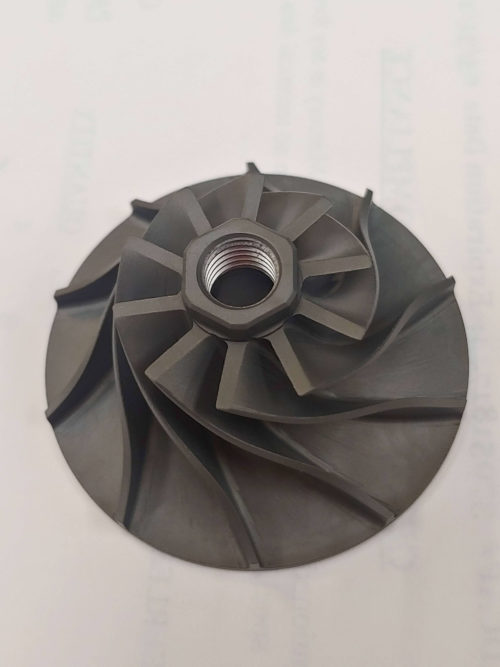What’s REALLY Involved in Manufacturing a Precision Machined Part?
Customers who place an order with our tight tolerance machine shop understandably want their parts as quickly as possible. But lightning-fast turnaround times aren’t always realistic, especially at shops like ours that emphasize precision and quality.
There are various factors at play that impact part turnaround. From the time we receive a PO until the part is shipped to your door, we complete several steps that ensure the high level of quality you’ve come to expect from Peerless Precision.
Still, we know waiting for a part to be manufactured can be frustrating. In the spirit of transparency, here’s a behind-the-scenes look at what goes into manufacturing your parts so you can be confident that we’re spending every minute wisely.
Your Part’s Journey from PO to Delivery
Manufacturing a part at an AS/ISO-certified machine shop involves much more than simply running it through a mill or a lathe and sending it out for delivery. You can expect your project to follow this standard journey at Peerless Precision:

1. Contract review
Before physically making your part, we must develop a process and plan to ensure that we complete your order correctly the first time.
Conducting a contract review at the beginning of your project gives us an understanding of key requirements such as:
- Part specifications
- Materials
- Hardware
- Inspection
- Finishing, including operations that may require outside vendor services
2. Order approval
During the approval stage, our internal team has the opportunity to finely tune our internal router/traveler and ensure that everyone is aligned on the manufacturing process.
The plan goes out to our engineering, quality, and production departments for review. They may, for example, identify unnecessary operations or add operations that were initially overlooked. We’ll make any adjustments to the manufacturing process at this stage before finalizing your order.
3. Sourcing materials
With the necessary approvals, it’s time to start ordering materials. Years ago, this part of the process was relatively straightforward. However, due to ongoing global supply chain challenges, lead times for materials are far more unpredictable and can change at a moment’s notice.
No matter what, we communicate openly every step of the way and will notify you if lead times are different than initially anticipated.
4. Programming
Programming is the final step before we begin physical work on your parts. We give our programmers the part design and traveler in advance so they can set up and program the machines to prove out the precision machining process.
Depending on the complexity of your part, this step could take anywhere from a few hours to a few days.
5. Sawing and machining
Now the fun begins! Once we receive the material, we send it to our sawing department to be cut into lengths or slugs.
If the material we ordered is pre-cut, it will go directly to the applicable machining department—typically milling or turning.
6. First piece approval
Whenever we run an operation—whether on a repeat or new part number—the first part goes through First Piece Inspection with our inspection department.
Our inspection team compares their measurements to the measurements recorded by the operator and the dimensions on the part drawing. If all measurements are in alignment, they give their stamp of approval to continue production. This thorough approach aims to ensure that the part is entirely within spec.
Once the operator has received the approval, they inspect each part that comes off the machine 100% to ensure that all parts are identical to the approved part.
7. Next machining operation
If a part requires precision machining operations on multiple pieces of equipment (e.g., starting on a mill and then being moved to a lathe), it won’t just jump the line when it goes to the second machine! Instead, it will be added to the queue of orders.
8. Outside vendor services
Heat treating, plating, and other outside finishing services add time to an order—anywhere from two days to two weeks to three months, depending on the vendor.
To ensure the highest level of quality, we inspect all parts before and after these services are performed.
9. Cylindrical or surface grinding
We perform cylindrical or surface grinding to work down tolerances and achieve surface finishes as low as 6 or 8 Ra.
When a customer requires exceptionally tight tolerances (down to one-millionth of an inch and/or a 2 Ra Surface Finish), we may send their part to our honing or lapping departments, where our experts perform these manual, time-intensive operations. If assembly is involved, the parts will go in to our assembly department before going through a final inspection.
10. Shipping
Finally, we ship parts according to our customer’s requirements. Customers will often indicate that a part could arrive to them a specified number of days early or late and still be considered on time. We’ll ensure delivery falls within that window, even if it means we have to hold parts in our inventory.
High-Quality Parts Are Worth the Wait
In a perfect world, we’d be able to machine parts that are perfectly in spec and ready for use with the snap of our fingers.
But precision machining isn’t so simple—at least not when you’re dealing with tight tolerance parts for high-risk industries. Waiting a little longer to get a high-quality part from an AS/ISO-certified machine shop is almost always worthwhile because you can be confident that they won’t cut corners.
If you’re concerned about long lead times, we recommend checking your design for opportunities to simplify features or loosen tolerances. You’re the expert on your part design, but we’re happy to engage in a conversation with you about optimizing the manufacturability of your part to streamline our process.





Comments are closed